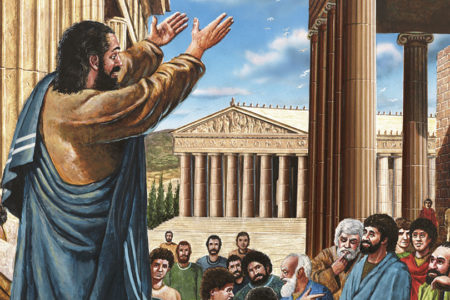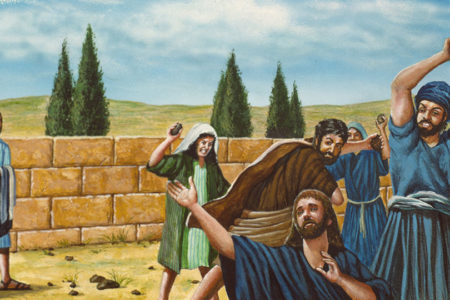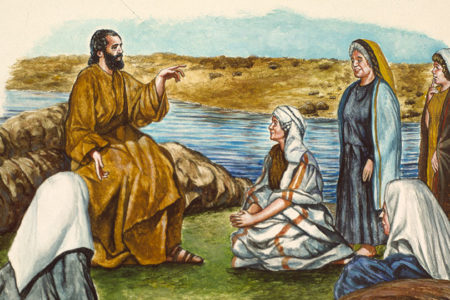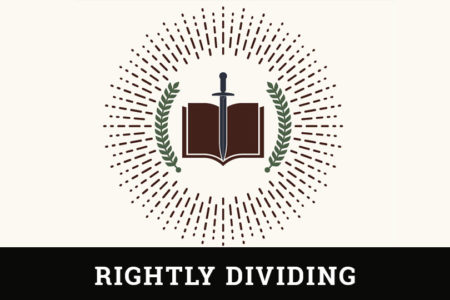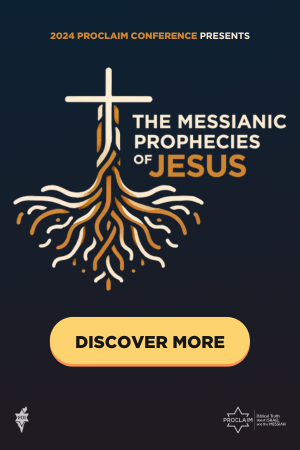The Two Phases and Implications of the Future Day of the Lord
The Broad and Narrow Phases
The Bible teaches that the future Day of the Lord has two phases. First, there is the broad phase, which refers to an extended period of time involving divine interventions in the 70th week of Daniel 9 plus the thousand-year Millennium. Evidence for this was seen in the previous article in this series.
Concerning this broad phase, Davidson wrote, “Though the ‘day of the Lord,’ as the expression implies, was at first conceived as a definite and brief period of time, being an era of judgment and salvation, it many times broadened out to be an extended period. From being a day it became an epoch.”1
Second, there is a narrow, more intense phase of the Day of the Lord that refers to one specific day—the day on which Christ will return to the earth from Heaven in His glorious Second Coming.
Just as the word day in Genesis 1:5 has both a broad phase (a 24-hour day: “And the evening and the morning were the first day”) and a narrow phase (the light part of the 24-hour day in contrast with the darkness part: “And God called the light Day, and the darkness he called Night”), so the expression the Day of the Lord has both a broad phase and a narrow phase in relation to the future.
Evidence for the Narrow Phase
The following facts reveal that the Scriptures present a future Day of the Lord that will be narrowed or limited to one specific day. First, Revelation 16:12–16 indicates that the armies of the nations of the world will not begin to gather in Israel for Armageddon until the sixth vial or bowl is poured out. It should be noted that the pouring out of the sixth vial or bowl and the resultant gathering of the armies will take place after a significant part of the broad Day of the Lord has already run its course.
Second, both Joel 3:9–16 and Zechariah 14:1–5 indicate that after the armies of the nations have gathered in Israel, “the day of the Lᴏʀᴅ is near” and “cometh.” It is obvious from the language that this future Day of the Lord will not take place until after the armies of the nations have gathered in Israel. Since this Day of the Lord of Joel 3 and Zechariah 14 will not take place until after the armies have gathered in Israel, and since the armies will not begin to gather until after a significant part of the broad Day of the Lord has already run its course, it must be concluded that after a significant part of the broad Day has run its course, there will be another Day of the Lord yet to come.
This other Day of the Lord will be a part of the broad phase, but there is a genuine sense in which it will be a complete Day of the Lord on its own, different from the broad phase. One difference will be its duration. As noted earlier, the broad phase will cover an extended period of time. By contrast, the Joel 3 and Zechariah 14 Day of the Lord will be narrow or limited in time. Thus, there will be two phases of the future Day of the Lord.
Third, both Joel 3 and Zechariah 14 indicate that the Day of the Lord will be the specific time when the Messiah will come to fight against and destroy the armies gathered in Israel. According to Revelation 19:11–21, that will be when Christ comes from Heaven to the earth in His Second Coming. Thus, the narrow Day of the Lord of Joel 3 and Zechariah 14 will be the day of Christ’s Second Coming.
The Great and Terrible Day of the Lord
It should be noted that Joel 3:14–15 indicates that the sun, moon, and stars will be darkened when the narrow phase nears. That is, those heavenly bodies will be darkened before the narrow Day of the Lord comes. Joel 2:31 declares that the heavenly bodies will be darkened “before the great and the terrible day of the Lᴏʀᴅ come.” It is obvious from this that Joel 3 and 2 are both referring to the same Day of the Lord. It can therefore be concluded that the narrow Day of the Lord of Joel 3 and Zechariah 14 is to be identified with the great and terrible Day of the Lord.
Since, as was noted earlier, the narrow Day of the Lord of Joel 3 and Zechariah 14 will be the day on which Christ appears in His Second Coming and is to be identified with the great and terrible Day of the Lord, it can be concluded that the great and terrible Day of the Lord will be the day of Christ’s Second Coming. In line with this conclusion, The Babylonian Talmud makes the following statement concerning the great and terrible Day of the Lord: “This is understood to refer to the advent of the Messiah.”2
In light of the foregoing, it should be noted that the Scriptures apply the expression the great and terrible Day of the Lord to the narrow phase rather than to the broad phase. The implication is that the narrow phase will differ from the rest of the broad phase, not only in its duration, but also in its significance. Although the earlier part of the judgment phase of the broad Day of the Lord will involve a great outpouring of divine wrath on the domain of Satan and rebellious man, the narrow Day of the Lord will be the grand climax of that judgment phase. Thus, Bullinger, when referring to the Day of the Lord of Joel 2:31, said, “It is called ‘the great and the terrible day of the Lᴏʀᴅ,’ as though it were the climax of the whole period known as ‘the day of the Lᴏʀᴅ.’”3 Along similar lines, Keil, when referring to the judgment of the narrow Day of the Lord of Joel 3, declared, “It is the last decisive judgment, in which all the single judgments find their end.”4
The narrow Day will be the great and terrible Day of the Lord because, in contrast with the earlier part of the judgment phase of the broad Day, the narrow Day will involve the coming of Christ from Heaven to earth. It therefore will do several things. It will expose God’s enemies to the actual presence of Christ and the fullness of His divine power and glory, judgment and warfare; bring the angelic armies of Heaven against these armies; end the rule of Satan and rebellious man over the world system; and evict these enemies from the earth (Mt. 13:40–42, 49–50; 24:29–30; 25:31, 41, 46; Lk. 17:26–37; Rev. 19:11–20:3). In other words, it will end the day of Satan and rebellious man on earth forever.
Because the narrow phase will bring such a decisive, permanent change to the world, Joel called the place where the grand climax of God’s judgment will fall on Satan and man “the valley of decision” (3:14). Concerning this designation, Keil made the following comment: “Valley of the deciding judgment, from charats, to decide, to determine irrevocably.”5
Implications of the Two Phases
There are at least two significant implications in the fact that there will be both broad and narrow phases of the future Day of the Lord. First, since, as noted earlier, the narrow phase of Joel 3 and Zechariah 14 will take place after a significant part of the broad phase has already run its course, and since that narrow phase will be the day on which Christ will come in His glorious Second Coming, it can be concluded that the Second Coming of Christ will take place after a major part of God’s wrath has been poured out on the world. It will not take place before or at the beginning of the outpouring of God’s wrath on the world.
Second, it was demonstrated earlier that the great and terrible day of the Lord of Joel 2:31 refers to the narrow phase—the day of Christ’s Second Coming—rather than to the broad phase.
The Prophet Malachi referred to the same great and terrible Day of the Lord as Joel (Malachi used the identical Hebrew words and constructions that Joel used for the great and terrible Day of the Lord in 2:31). In its comments on Joel 2:31, The International Critical Commentary states, “The clause before the great and terrible day of Yahweh comes is the same as in Mal. 3:15 (Engl. 4:5).”6
Since Joel and Malachi were both referring to the same great and terrible Day of the Lord, and since Joel’s great and terrible Day of the Lord is the narrow Day (the day of Christ’s Second Coming), not the broad Day, it can be concluded that Malachi’s great and terrible Day of the Lord is also the narrow Day of the Lord.
Malachi declared that God will send “Elijah, the prophet, before the coming of the great and terrible day of the LORD” (4:5). Since Malachi’s great and terrible Day of the Lord is the narrow phase, it can be concluded that his declaration indicates that God will send Elijah before Christ’s Second Coming. Malachi was not declaring that God will send Elijah before the broad phase—before He begins to pour out His wrath on the world. In light of the meaning of the great and terrible Day of the Lord, Malachi’s declaration leaves room for Elijah to come and minister after the broad phase has begun and, therefore, while the wrath of God is being poured out on the world.
ENDNOTE
- A. B. Davidson, The Theology of the Old Testament in International Theology Library (New York, NY: Charles Scribner’s Sons, 1936), 381.
- Shabbath, 118a, in The Babylonian Talmud (London: Soncino Press, 1938), footnote, 580.
- E. W. Bullinger, The Apocalypse or “The Day of the Lord” (London: Eyre and Spottiswoode, 1935), 248.
- C. F. Keil, The Twelve Minor Prophets, Vol. 1, in Biblical Commentary on the Old Testament, trans. By James Martin (Grand Rapids, MI: Wm. B. Eerdmans Publishing Company, 1954), 226.
- Ibid., 228.
- John Merlin Powis Smith, William Hayes Ward, and Julius A. Bewer, A Critical and Exegetical Commentary on Micah, Zephaniah, Nahum, Habakkuk, Obadiah and Joel, in The International Critical Commentary (Edinburgh: T. & T. Clark, 1911), 124.

